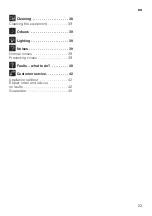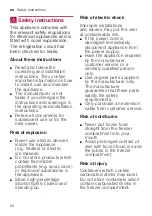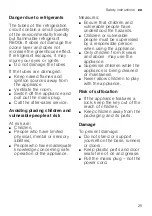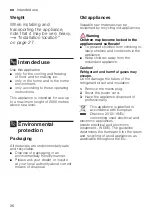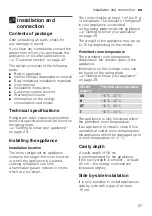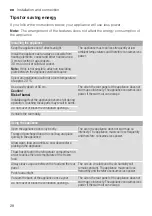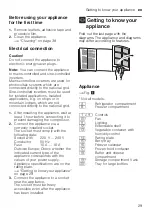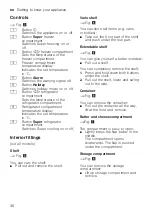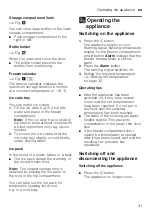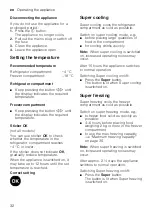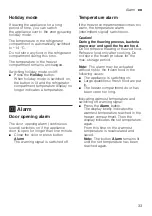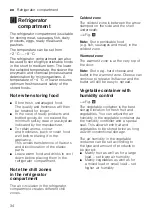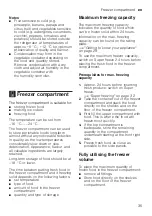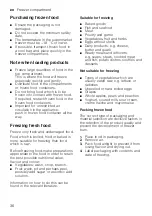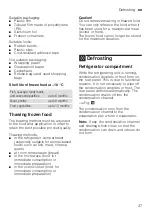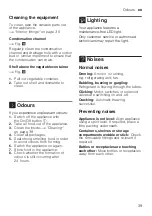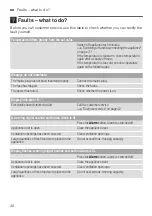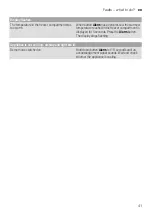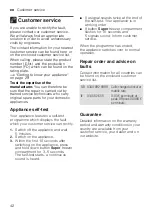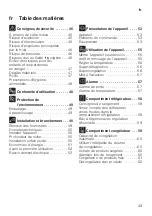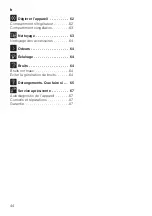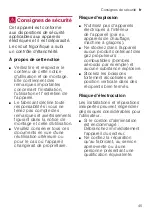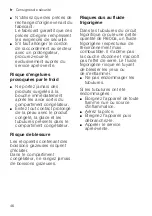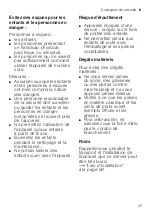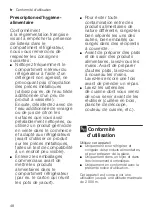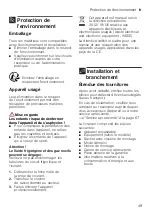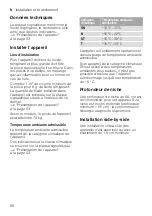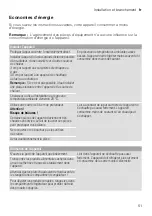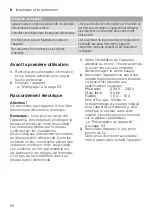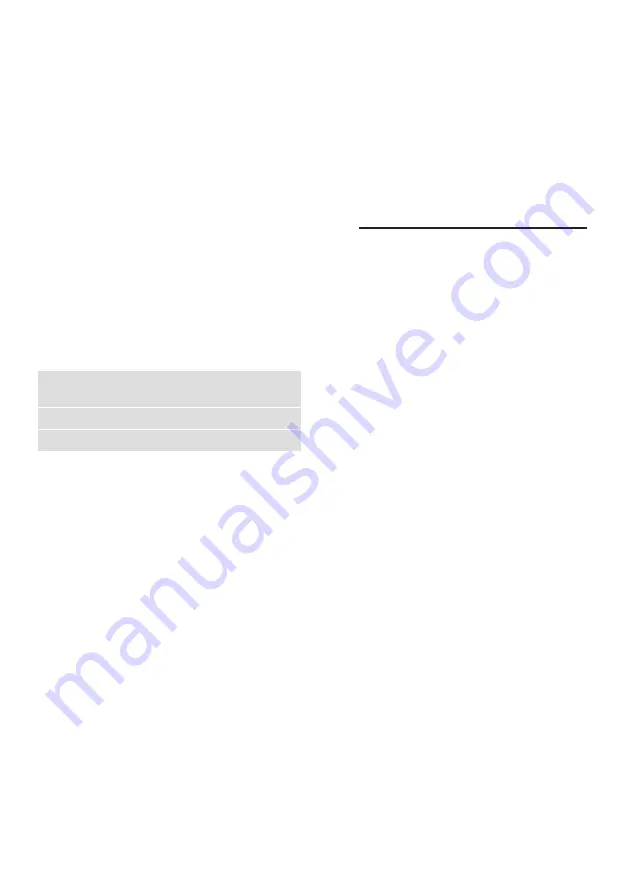
Defrosting
en
37
Suitable packaging:
■
Plastic film
■
Tubular film made of polyethylene
(PE)
■
Aluminium foil
■
Freezer containers
Suitable locks:
■
Rubber bands
■
Plastic clips
■
Cold-resistant adhesive tape
Not suitable packaging:
■
Wrapping paper
■
Greaseproof paper
■
Cellophane
■
Refuse bags and used shopping
bags
Shelf life of frozen food at –18 °C
Thawing frozen food
The thawing method must be adjusted
to the food and application in order to
retain the best possible product quality.
Thawing methods:
■
in the refrigerator compartment
(especially suitable for animal-based
foods such as fish, meat, cheese,
quark)
■
at room temperature (bread)
■
in the microwave (food for
immediate consumption or
immediate preparation)
■
in the oven/cooker (food for
immediate consumption or
immediate preparation)
Caution!
Do not refreeze thawing or thawed food.
You can only refreeze the food when it
has been used for a ready-to-eat meal
(boiled or fried).
The frozen food can no longer be stored
for the maximum duration.
=
Defrosting
Defrosti
ng
Refrigerator compartment
While the refrigerating unit is running,
condensation droplets or frost form on
the rear panel. This is due to functional
reasons. It is not necessary to wipe off
the condensation droplets or frost. The
rear panel defrosts automatically. The
condensation drains off into the
condensation channel.
~
Fig.
.
The condensation runs from the
condensation channel to the
evaporation pan where it evaporates.
Note:
Keep the condensation channel
and drainage hole clean so that the
condensation can drain and odours do
not form.
Fish, sausage, ready meals
and cakes and pastries:
up to 6 months
Meat, poultry:
up to 8 months
Fruit, vegetables:
up to 12 months
Содержание KI67 Series
Страница 114: ...6...
Страница 115: ...6XSHU 6XSHU ROLGD ODUP E M 5 K...
Страница 116: ......
Страница 117: ...1 2 3 4 5 6...
Страница 118: ......
Страница 119: ...9001014384 9001014384 9505 de en fr it nl...

